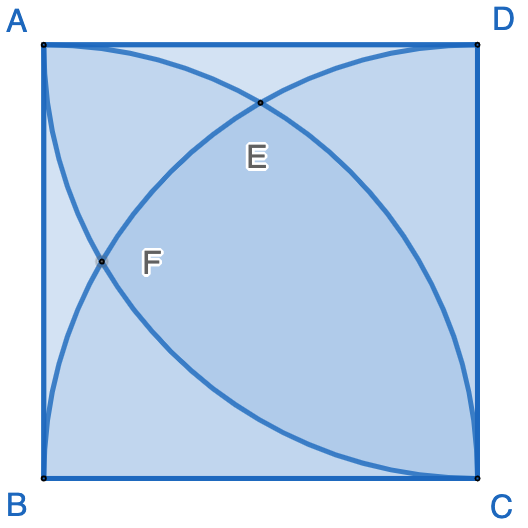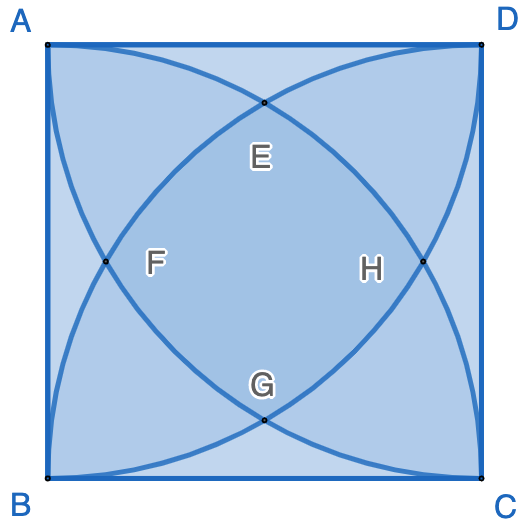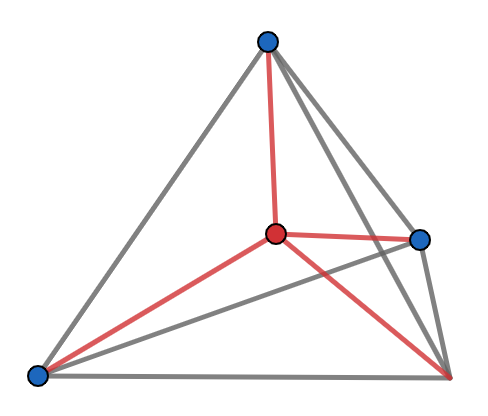By adding one more quarter circle, we have the following figure. The question is: what is the area of the region bounded by arc $\stackrel \frown {AE}$, $\stackrel \frown {EF}$ and $\stackrel \frown {FA}$?

In fact, based on the calculations in the previous posts in this series, we have: $$ [AEF]=1−[BCD]−[ADE]−[ABF] $$ $$ =1-\dfrac{\pi}{4}-2\cdot(1-\dfrac{\sqrt{3}}{4}-\dfrac{\pi}{6})=\dfrac{\pi}{12}+\dfrac{\sqrt{3}}{2}-1 $$
If one more quarter circle is added, shown as the following figure, what is the area of the region in the middle bounded by arc $\stackrel \frown{EF}$, $\stackrel \frown{FG}$, $\stackrel \frown{GH}$, and $\stackrel \frown{HE}$?

Again, based on the previous calculations, we have: $$[EFGH]=1-4\cdot([ADE] + [AEF]) $$ $$=1-4\cdot((1-\dfrac{\sqrt{3}}{4}-\dfrac{\pi}{6}) + (\dfrac{\pi}{12}+\dfrac{\sqrt{3}}{2}-1)) = 1-\sqrt{3}+\dfrac{\pi}{3} $$
Can you solve the problem without using the previous calculations? To be continued…



